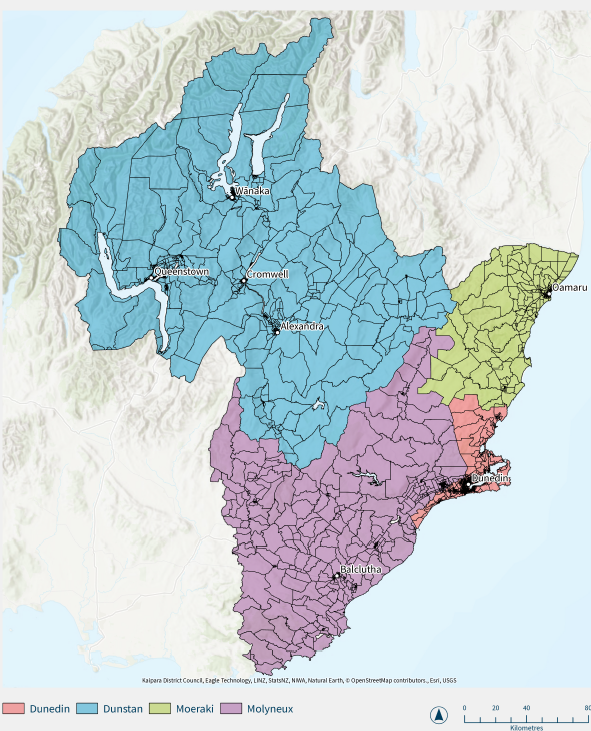The number of ORC Councillors is proposed to remain the same, at 12. Councillors voted 10-2 for Option one (of four options) yesterday.
Councils are required to conduct a representation review every six years under the Local Electoral Act.
Council yesterday received a report from staff and voted 10-2 to go out to the public in July with the proposal that the ward boundaries for the region remain the same but that the Dunedin ward would lose a Councillor and have 5 instead of 6 and the Dunstan ward would gain a Councillor and have 4 instead of the current 3.
ORC Chair Gretchen Robertson says, “We’re keen to hear what communities have to say about this proposed change and we’re not making up our minds until we hear what they say.”
Staff will bring the formal initial proposal back to Council at the end of June for notification, after which the community will be consulted on the structure of the region’s wards and number of councillors representing each ward from on July 10. Should changes be made, they won’t come into effect until the next local government election in October 2025.
What is a representation review?
Every six years councils must review how communities are represented in the make-up of their council. A representation review looks at the structures in place, including:
- the number of constituencies (electoral areas) and their boundaries
- the number of elected members (councillors) representing each constituency
The representation review cannot change the people who are currently elected but it may increase the number of councillors - 14 is the maximum number of councillors a regional council can have.
The last representation review for Otago Regional Council was completed in 2018. No changes were made to the existing constituencies or number of councillors.
Representation reviews require Council to look at three key concepts:
- Communities of interest: to identify what communities of interest exist across the district, which is relevant to determining the number and boundaries of constituencies
- Effective representation of communities of interest: to identify what’s the best structure to maintain access and representation that recognises these communities of interest, which is relevant to determining the number of members
- Fair representation of electors: to ensure that each councillor should represent roughly the same number of people, which is relevant for ensuring equality of representation per member.
Current arrangement
The Otago Regional Council is made up of 12 Councillors, elected from four constituencies:
- Dunstan 3
- Moeraki 1
- Molyneux 2
- Dunedin 6
Proposed new arrangement
Status Quo constituencies with a reallocation of Councillors
The proposed new arrangement will:
Retain a total of 12 councillors.
Retain the current electoral boundaries with constituencies for Dunedin, Moeraki, Molyneux and Dunstan.
Redistribute a councillor from Dunedin to Dunstan to reflect large population growth in the Queenstown and Wānaka areas.
Retain the existing constituency names.


